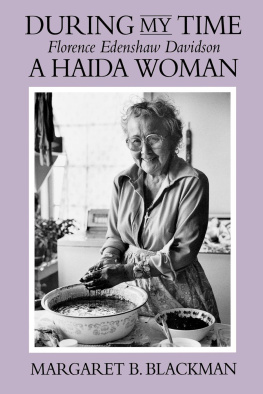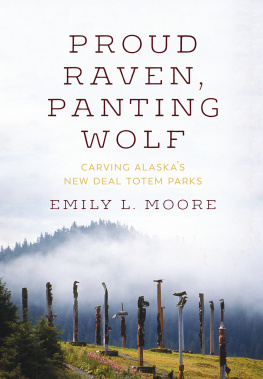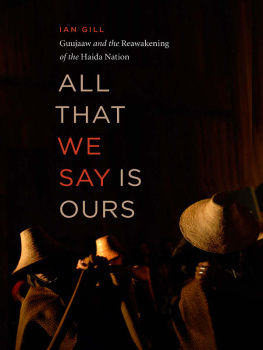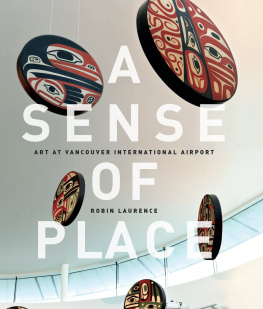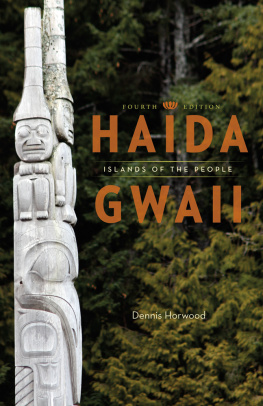RAVENS
CRY
RAVENS
CRY
Christie Harris
Illustrations by Bill Reid
Foreword by Robert Davidson and Margaret B. Blackman

Copyright 1966, 1992 by Christie Harris
Illustrations copyright 1966, 1992 by Bill Reid
Foreword copyright 1992 by Robert Davidson and Margaret B. Blackman
995 4
All rights reserved. No part of this book may be reproduced or transmitted in any form or by any means without permission in writing from the publisher, except by a reviewer, who may quote brief passages in a review.
Published in Canada by
Douglas & McIntyre, 1615 Venables Street,
Vancouver, British Columbia V5L 2H1
Canadian Cataloguing in Publication Data
Harris, Christie.
Ravens cry
ISBN 1-55054-055-6
1. Haida IndiansFiction. 2. Indians of North AmericaBritish ColumbiaQueen Charlotte IslandsFiction.
I. Reid, Bill, 1920- II. Title.
PS8515.A789R3 1992 | C813.54 | C92-091651-1 |
PR9199.3.H37R3 1992 |
Published simultaneously in the United States of America by The University of Washington Press, P.O. Box 50096, Seattle, Washington 98145-5096
Library of Congress Cataloging-in-Publication Data
Harris, Christie.
Ravens cry / Christie Harris ; illustrations by Bill Reid ; foreword by Robert Davidson and Margaret Blackman.
p. cm.
Originally published: New York : Atheneum, 1966.
ISBN 0-295-97221-1
1. Haida IndiansFiction. 2. Indians of North AmericaBritish ColumbiaFiction. I. Title.
PR9199.3.H34587R38 1992 | 92-23934 |
813.54dc20 | CIP |
Editing by Saeko Usukawa
Design by Barbara Hodgson
Typeset by CompuType Inc., Vancouver, B.C.
Printed on acid-free paper
Ravens Cry is respectfully dedicated to the many
gifted native artists who are contributing to the
unique color of our west coast while restoring
their peoples faith in a way of life that was
remarkably satisfying to a vigorous northern
people and also infinitely kinder to the Earth
we all share.
FOREWORD
THIS FOREWORD WAS TRANSCRIBED from a taped conversation between Robert Davidson (RD) and Margaret Blackman (MB) on 17 August 1992, specifically on the subject of Ravens Cry by Christie Harris. The transcript was edited for publication, and the edited version was amended and approved by both participants.
MB | Tell me, when did you first read Ravens Cry? |
RD | I first read it when the book came out in 1966. It filled a gap in my life as a Haida person, in that when I was going to school in Massett, I kept searching through social studies books, trying to find information on Haida people. At one point in my youth, I started to hear the word Haida more and more. I didnt realize that I was Haida, and when I started to realize I was Haida, then I wanted to know more about Haida. And so this book helped in starting to fill that gap. |
MB | I first read it when I was in graduate school, around 1969. I read it because I was studying some historical photographs of Haida villages (including several of Chief 7wiiaas house) and was looking for more sources of information. What struck me was that so much research had gone into the writing of the story. Even more importantly, behind this story lay the original documents, which I as an anthropologist and ethnohistorian could consult for the information I was interested in. I was struck by all of the research that had gone into the book, and reading it made me hungry for more. |
RD | I was really impressed with the sincerity and the feeling Christie Harris portrayed. Its a very good attempt at trying to look at history from a native point of view. For myself, being a native, it helped to give me an idea of why we are such a devastated people, spiritually and culturally. |
MB | I give Christie Harris a lot of credit for trying to portray the history of Haida contact with the outside world through the eyes of the Haida. I cant comment on how successfully she did that, not being a Haida nor living at that particular period of time, but it was a very important step to try to portray history from the native point of view. At the same time, she aimed her book at a general audience, so I think it filled a big need. |
RD | One of the things that I also found is that Ravens Cry was easy to read. The names of people mentioned in it are now becoming more familiar to me, since Ive started to dig deeper into history and learn more about the background, philosophy and ideas of Haida culture. |
MB | For me the book really marked the beginning of a quest. It sent me to the Queen Charlotte Islands to document the historical photographs that I was collecting. It led me to people like Chief William Matthews, who told the side of the story that is alluded to briefly in the book, the account of Chief 7wiiaa, his father and his lineage. Ravens Cry launched my career as a student of Haida history, but it can also be read as a childrens story. Ive read it to my daughter. |
RD | I see this book as a beginning for a novice who wants to look at the background and history of the Haida. In high school I really wanted to know more about my background. But in our homes, there was nothing mentionedmy parents didnt speak Haida in front of me, though my grandparents spoke Haidaand that was a real setback for me, when I finally realized I was Haida. |
In school we talked about Hannibal, we talked about Cleopatra, Alexander the Great, and all the romanticism that went with those people. Later, I was to realize we had our own culture and our own heroes such as Albert Edward Edenshaw, Charles Edenshawbut there was no information anywhere so that I could relate to them. |
MB | I think, given the time at which Ravens Cry was published, it said something else worth noting. It was particularly important that in the 1960s there was an outsider who was interested in the Haida point of view and in presenting that point of view to a wide readership. It makes a statement when someone from the outside comes in and says, Hey, this is important history, and this has a right to be heard as well. Granted, Harris took a stab in the dark in trying to articulate Haida emotions and reactions, and how successful she was at that I cant really say. Perhaps some older generation Haida speakers could evaluate that. |
RD | There are some ideas in the book that I found very anglicized, but they didnt bother me. I felt there was a person making known some of the tragedies that happened to the Haida people. It gives you an idea about where the alcoholism, the drug abuse, the child abuse, all those native difficulties, are coming from. |
MB | I think, too, that the book was ahead of its time, because the Haida people in Ravens Cry are not the Other encountered by the maritime traders and explorers. Rather, the Haida people are the central actors in this book; the story revolves around them. And that makes a real difference. This is the very thing that is being said today, that we need histories from the perspective of the native people, and that is what Christie Harris attempted more than twenty-five years ago. |
Next page

